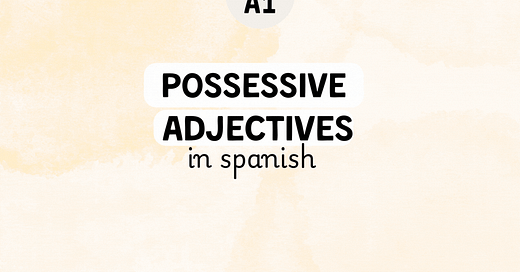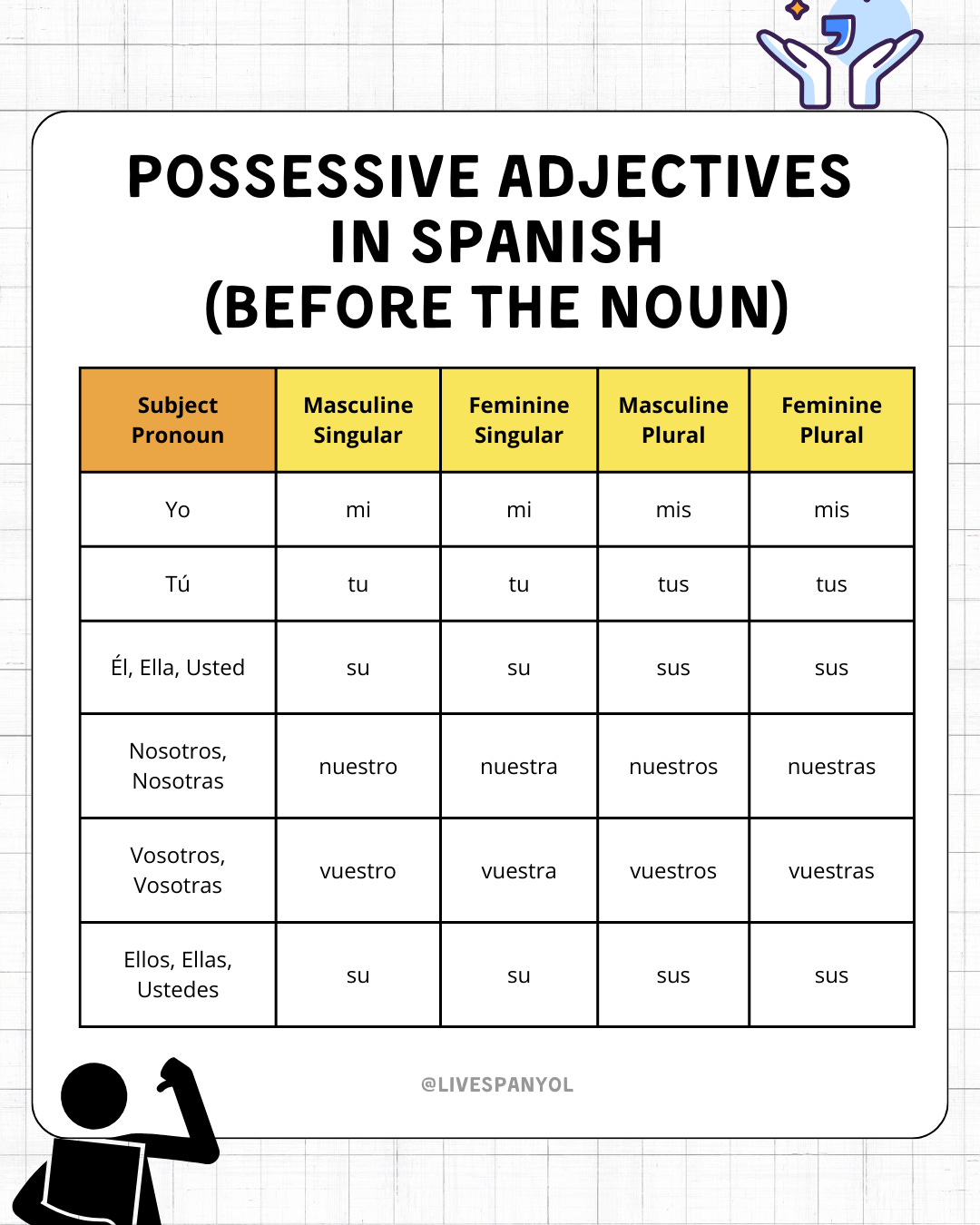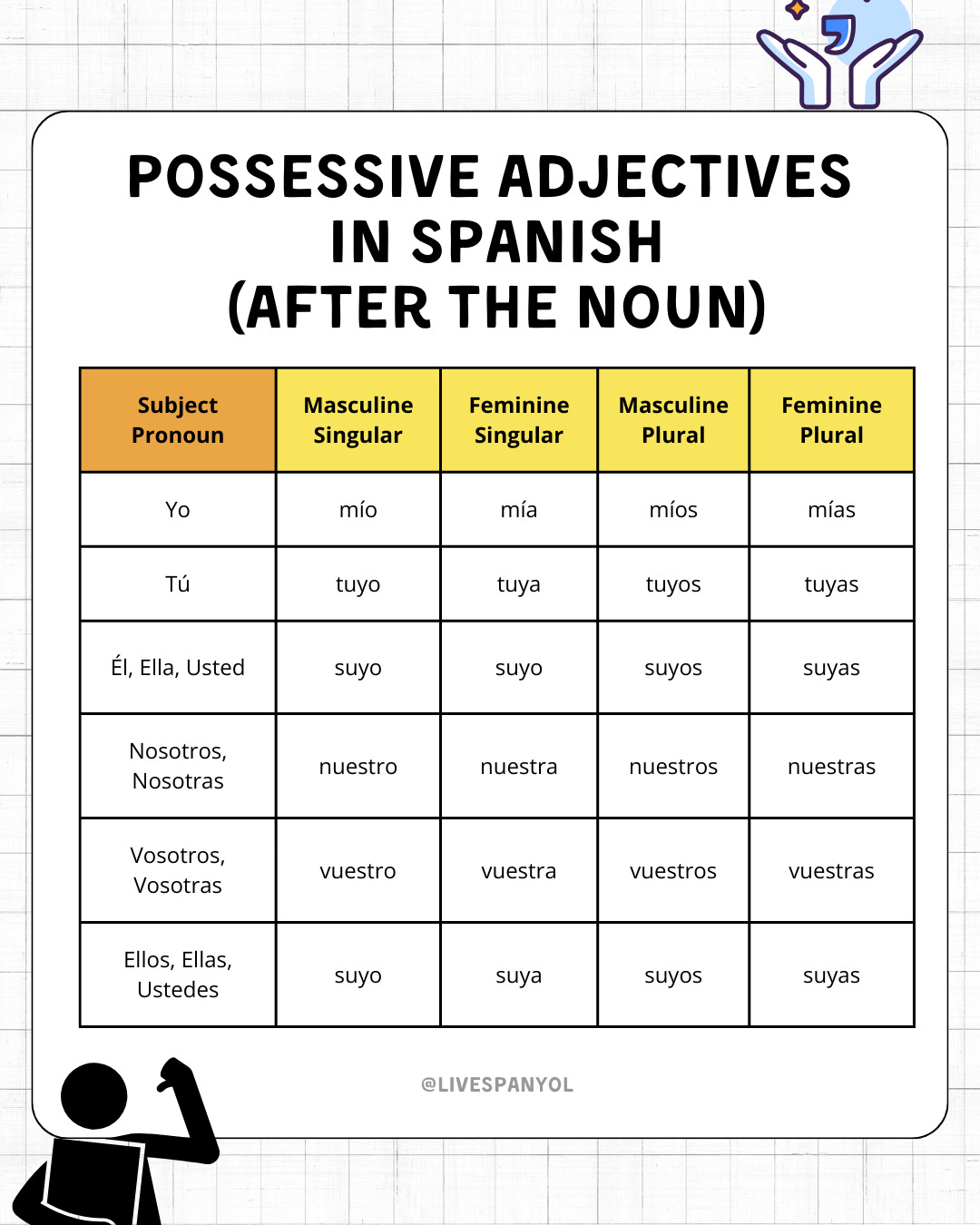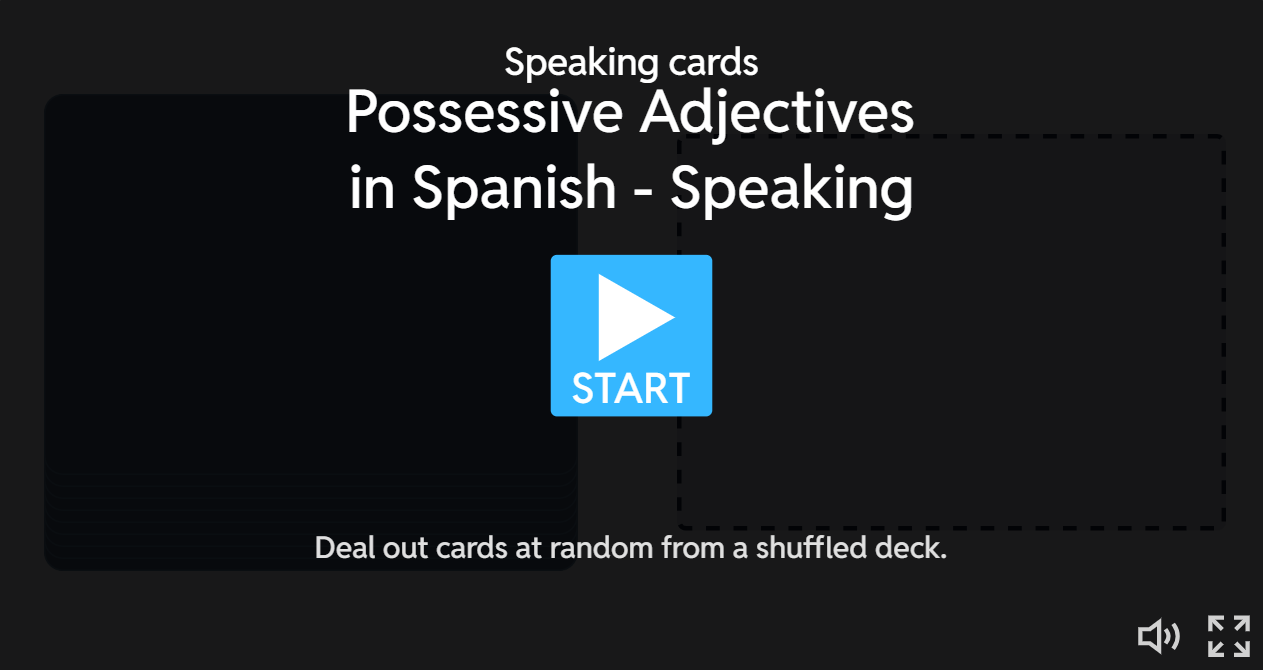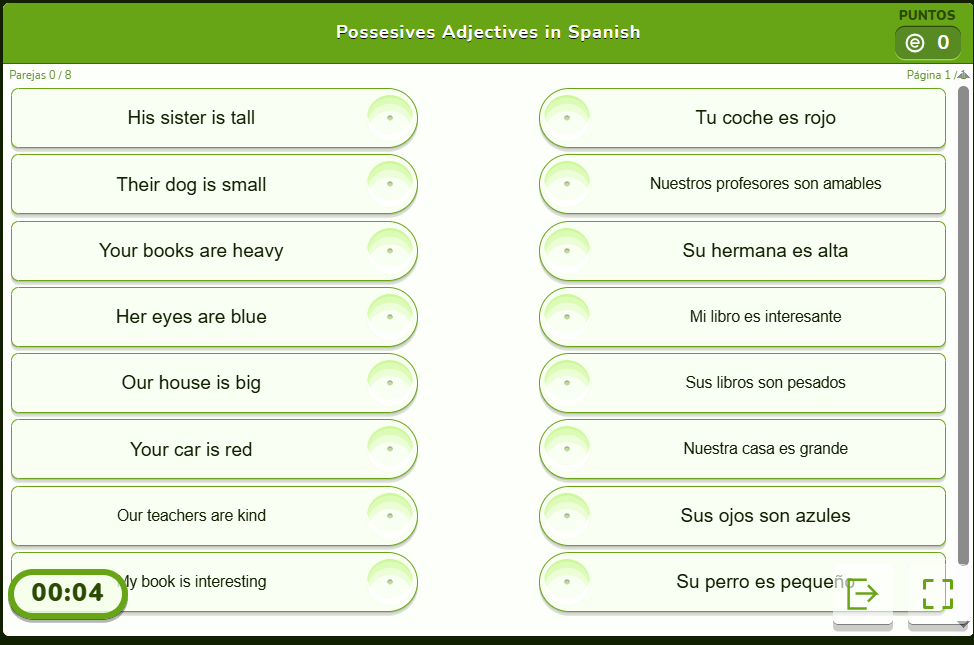Possessives in Spanish
Learning Spanish possessive forms can be tricky, but this guide will make it easy! Whether you're a beginner or brushing up, we’ll cover mi, tu, su, mío, tuyo, suyo, and more—with examples, exercises.
Possessive adjectives in Spanish (adjetivos posesivos) are used to indicate ownership or relationships. Do you get confused between mi and mío, or su and suyo?
In Spanish, possessive adjectives have two forms:
1️⃣ Short form (before the noun) – mi libro (my book)
2️⃣ Long form (after the noun) – el libro mío (the book of mine)
In this guide, you’ll learn:
✔ How to show possession, family ties, and ownership correctly
✔ When to use short vs. long forms (with key examples)
✔ Tricks to avoid common mistakes with su and sus
Let’s dive in! 🚀
📚 Explanation: Possessive Adjectives
In Spanish, possessive adjectives are used to indicate possession, relationship (parentesco), and ownership (pertenencia). They agree in gender and number with the noun they modify, not with the owner.
Here’s a breakdown in English with examples:
1. Possession (Posesión)
Used to show that something belongs to someone.
Mi libro (My book)
Tu casa (Your house)
Su coche (His/Her/Your(formal)/Their car)
2. Relationship (Parentesco)
Used to indicate family relations.
Nuestro padre (Our father)
Vuestra madre (Your(plural, Spain) mother)
Sus hermanos (Their/Your(formal) siblings)
3. Ownership/Belonging (Pertenencia)
Used to show that something is part of someone’s belongings.
Mi teléfono (My phone)
Su dinero (His/Her/Your(formal)/Their money)
Nuestras llaves (Our keys)
Key Notes:
Unlike English, Spanish possessive adjectives do not change based on the owner’s gender (only the noun’s).
Correct: Su libro (His/her/your/their book)
Use de + pronoun for clarity when needed:
El libro de él (His book)
El coche de ella (Her car)
1. Short Forms (Before the Noun)
Examples:
Mi libro (My book)
Nuestra casa (Our house)
Sus amigos (Their/Your friends)
2. Long Forms (After the Noun, less common but more emphatic)
In Spanish, possessive adjectives can also appear in their long form (stressed/possessive pronouns), which come after the noun and agree in gender and number with the noun they modify.
These forms are often used for emphasis, clarification, or poetic/literary expression.
El libro mío (The book of mine)
La casa nuestra (The house of ours)
🎧 Listening Activity
Listen to the sentences and identify the possessive adjective.
📖 Reading Activity
Read the paragraph and underline all possessive adjectives.
"Hola, me llamo Ana. Mi familia es grande. Mis padres tienen su coche nuevo. Nuestra casa es bonita, y vuestros regalos están en la mesa."
Answers:
Mi, mis, su, nuestra, vuestros
🗣 Speaking Activity
Answer the questions using possessive adjectives.
¿Cómo se llama tu mejor amigo/a?
"Mi mejor amigo se llama Carlos."
¿Dónde está vuestra escuela?
"Nuestra escuela está en el centro."
Click here to practice.
🔄 Mediation (Translation & Explanation)
Translate into Spanish: Click here to practice.
✅ Conclusion
Possessive adjectives in Spanish must match the gender and number of the noun they describe. Remember:
✔ Short forms go before the noun (mi, tu, su).
✔ Long forms are less common but more emphatic (mío, tuyo).
✔ Practice with listening, reading, and speaking to master them!
📢 Now, try creating your own sentences using possessive adjectives! 😊
🚀 Want to Learn More?
📅 Book a 1-on-1 Spanish Lesson with me! 👉 Click here to schedule!


